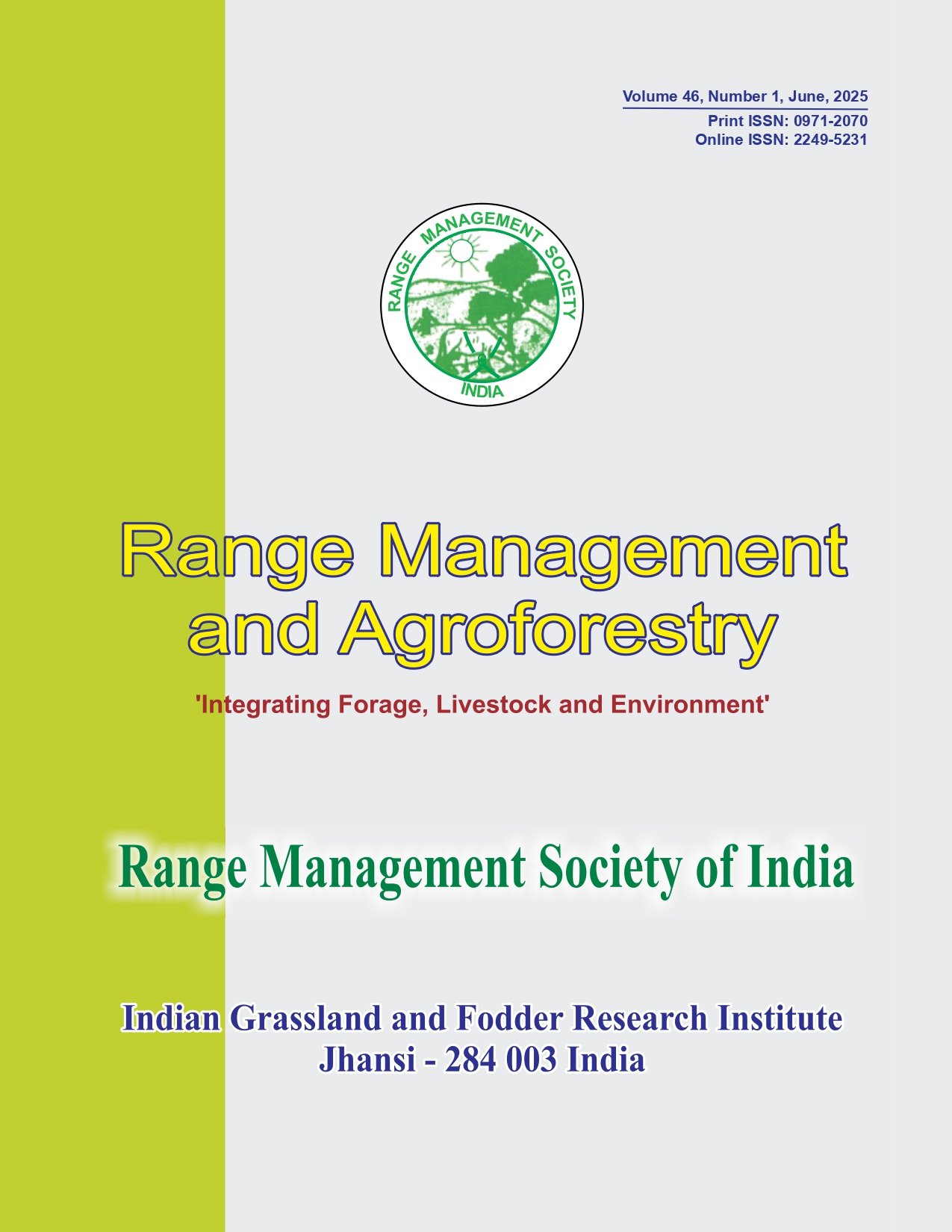Melia dubia leaf fodder has higher secondary metabolites in lean period across ranges of Satpura and northwestern Ghats
DOI:
https://doi.org/10.59515/rma.2025.v46.i1.13Keywords:
Alkaloids, Flavonoids, Phenolics, Saponin, Tannin, TerpenoidsAbstract
Important secondary metabolites in Melia dubia Cav. were investigated to reveal variations in these secondary phytochemicals across different provenances within the Satpura and northwestern Ghats Mountain ranges. Secondary metabolites were estimated during the winter and summer seasons of 2020 and 2021 to determine their provenance and seasonal variations. Study revealed that the total alkaloid content (TAC), total flavonoids content (TFC), total phenolic content (TPC), total saponin content (TSC), total tannin content (TTC) and total terpenoids content (TTeC) of M. dubia exhibited significant variation (p ≤0.05) among the selected 8 provenances (except TSC) and seasons (winter and summer). TAC, TFC, TSC, TTC, TTeC and TPC ranged from 12.73–13.41, 2.27–2.78, 12.51–16.91, 12.34–12.64, 9.53–16.03 and 7.13–7.76%, respectively. TSC content did not exhibit significant variation among provenances. Leaf fodder TAC, TFC, TSC, TTC and TTeC (14.57, 3.25, 13.01, 15.64 and 8.04%, respectively) was significantly higher in the winter season and TPC was significantly higher (19.44%) in the summer season. The interaction effect due to provenance and season was statistically significant for all attributes. Findings suggested that the winter season i.e. lean period fodder of M. dubia possesses higher secondary metabolites and could be utilized for fodder quality improvement. These secondary metabolites in M. dubia leaf fodder could be a rich source of antioxidant, anti-inflammatory, and antibacterial activity, among others.
Downloads
Downloads
Published
How to Cite
Issue
Section
License
Copyright (c) 2025 S. S. Malek, N. S. Thakur, R. P. Gunaga, V. R. Patel

This work is licensed under a Creative Commons Attribution-ShareAlike 4.0 International License.







